The Burning Question: Can Cats Eat Jalapenos? A Comprehensive Safety Guide
- 21 Apr 2025 11:46
Cats, known for their curious nature and sometimes indiscriminate nibbling, often explore the world through taste and scent. This exploration can lead them to investigate human foods, including those with a spicy kick, like jalapeno peppers. Seeing a cat sniff or show interest in a jalapeno might prompt the question from concerned owners: can cats eat jalapenos? The answer, backed by veterinary science and an understanding of feline physiology, is a definitive and strong **no**. Feeding jalapenos or any spicy peppers to cats is unsafe, unhealthy, and potentially harmful. This guide will delve into the specific reasons why jalapenos pose a risk to cats, outline the potential consequences, and suggest safe alternatives for your feline companion.
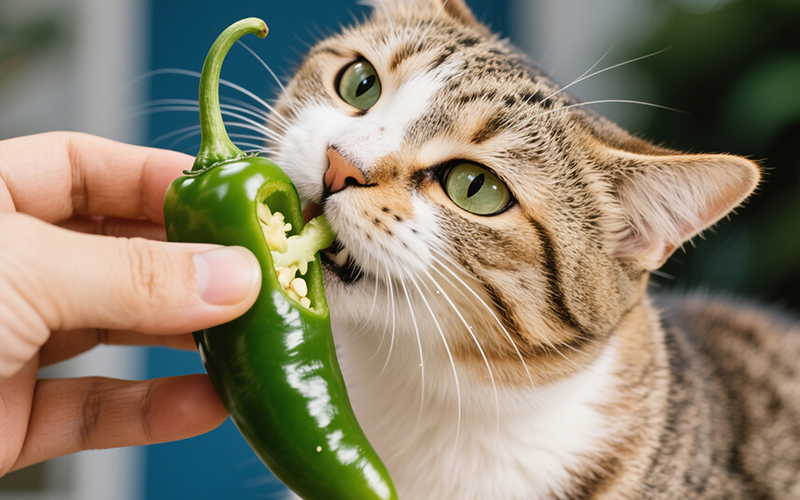
Understanding Jalapenos and Their Fiery Component: Capsaicin
Jalapenos are medium-sized chili peppers belonging to the *Capsicum annuum* species. Their characteristic heat comes from a chemical compound called **capsaicin**. Capsaicin is concentrated primarily in the white pith (placental tissue) and seeds of the pepper, though it's present throughout the fruit. In mammals, including humans and cats, capsaicin binds to specific pain receptors called TRPV1 (Transient Receptor Potential Vanilloid 1). These receptors are normally activated by high temperatures. When capsaicin binds to them, it tricks the brain into perceiving intense heat and pain, leading to the familiar burning sensation associated with spicy foods. While some humans enjoy this sensation in moderation, it's an overwhelmingly negative and painful experience for cats, who lack any nutritional need or natural inclination for such compounds.
Why Might a Cat Seem Interested? (And Why It's Misleading)
Cats are obligate carnivores. Their digestive systems and nutritional requirements are finely tuned for a diet based on animal protein and fat. They lack the taste receptors for sweetness and have a limited ability to digest plant matter efficiently. So, why might a cat investigate a jalapeno? * **Novelty:** Cats are often drawn to new objects or smells in their environment out of sheer curiosity. * **Scent:** While the "spicy" element isn't appealing, other volatile compounds in the pepper might pique their interest temporarily. * **Texture:** The shape or texture might invite a playful bat or an exploratory nibble. * **Association:** If the jalapeno is part of human food preparation, the cat might associate it with attention or the potential for other (more desirable) scraps. However, this curiosity should not be mistaken for a desire or need to eat the pepper. Their biological makeup is fundamentally incompatible with consuming spicy foods like jalapenos.
The Dangers: Why Jalapenos are Harmful to Cats
Giving a cat jalapeno, even a small amount, can lead to several adverse effects, primarily due to the irritating nature of capsaicin:
1. Severe Oral and Gastrointestinal Irritation
This is the most immediate and common reaction. When a cat bites into or ingests jalapeno:
**Oral Pain:** Capsaicin causes an intense burning sensation in the mouth, leading to drooling, pawing at the mouth, and distress.
**Esophageal and Stomach Irritation:** The burning continues down the digestive tract, irritating the sensitive lining of the esophagus and stomach.
**Vomiting:** The irritation often triggers vomiting as the body tries to expel the offending substance.
**Diarrhea:** Capsaicin irritates the intestines, potentially causing severe, painful diarrhea.
**Abdominal Pain:** The cat may show signs of discomfort, such as hunching, reluctance to move, or sensitivity when their belly is touched.
The core reason behind asking "can cats eat jalapenos?" often stems from witnessing or fearing these painful reactions.
2. Potential for Dehydration
Significant vomiting and diarrhea can quickly lead to dehydration, especially in smaller animals like cats. Dehydration is a serious condition that can affect organ function and may require veterinary intervention with fluid therapy.
3. Eye and Skin Irritation
If a cat handles a jalapeno (e.g., bats it around) and then touches its eyes or skin, the capsaicin oils can cause significant irritation, redness, and pain upon contact. They might squint, paw at their eyes excessively, or show skin inflammation.
4. Stress and Discomfort
The pain and gastrointestinal upset caused by jalapenos are incredibly stressful for a cat. This physiological and psychological stress can exacerbate existing health conditions and is detrimental to their overall well-being.
5. Lack of Nutritional Value
Jalapenos offer no nutritional benefits relevant to a cat's dietary needs. They are plant material that cats are poorly equipped to digest, providing empty (and harmful) exposure rather than nourishment.
6. Potential for Aspiration
During vomiting induced by the pepper's irritation, there's a risk the cat could inhale some of the stomach contents (aspiration), potentially leading to aspiration pneumonia, a serious lung infection.
7. Solanine Content (Minor Concern)
Like other members of the nightshade family (such as tomatoes and potatoes), peppers contain alkaloids like solanine, particularly in the stems and leaves, but also in the unripe fruit. While the primary danger from jalapenos is capsaicin, consuming large quantities of the plant material could theoretically lead to solanine poisoning, though this is less likely than capsaicin-induced issues from the pepper itself. Symptoms could include lethargy, drooling, severe gastrointestinal upset, weakness, and confusion.
Are Jalapenos Technically "Toxic" to Cats?
While jalapenos aren't typically listed alongside substances like lilies, chocolate, or antifreeze as being systemically toxic in the sense of causing organ failure from a small dose (with the exception of potential rare complications or massive ingestion), the **capsaicin** they contain acts as a potent irritant and toxin to the gastrointestinal system and mucous membranes. The effects can range from moderate discomfort to severe illness requiring veterinary care. Therefore, for all practical purposes related to pet safety, jalapenos should be considered harmful and effectively toxic to cats due to the guaranteed negative physiological reactions they induce.
What About Cooked Jalapenos or Milder Peppers?
* **Cooked Jalapenos:** Cooking may slightly reduce the capsaicin level, but it does not eliminate it. Cooked jalapenos still pose a significant risk of irritation and are unsafe for cats. Often, cooked jalapenos are part of dishes containing other harmful ingredients like onions, garlic, excessive salt, or fat. * **Milder Peppers (e.g., Anaheim, Poblano):** While milder peppers contain less capsaicin than jalapenos, they still contain enough to cause irritation and digestive upset in cats. A cat's sensitivity to capsaicin is much higher than that of most humans. * **Bell Peppers:** Bell peppers are a notable exception as they belong to a cultivar of *Capsicum annuum* that produces **no capsaicin**. Small amounts of plain, unseasoned red, yellow, or green bell pepper are generally considered safe for cats, although they offer little nutritional value and can still cause mild digestive upset in some sensitive individuals due to the fiber content. They are not a necessary part of a cat's diet. The key takeaway is that the heat-producing compound, capsaicin, is the primary problem, making virtually all chili peppers unsuitable for feline consumption.
What to Do If Your Cat Eats a Jalapeno
If you discover your cat has ingested jalapeno, act quickly: 1. **Remove Access:** Immediately take away any remaining pepper or contaminated food. 2. **Assess the Situation:** Try to determine how much was eaten and when. Was it a tiny nibble or a larger piece? Was it the flesh, seeds, or stem/leaves? 3. **Flush the Mouth (Carefully):** Offer small amounts of fresh water, milk, or plain yogurt. Dairy products contain casein, a protein that can help bind to capsaicin and slightly alleviate the burning sensation. However, remember most cats are lactose intolerant, so large amounts of milk/yogurt can cause diarrhea later – use sparingly for immediate relief only if the cat is willing to drink/lick. **Do not force liquids** into your cat's mouth, as this can lead to aspiration. 4. **Do NOT Induce Vomiting:** Inducing vomiting at home is generally not recommended and can be dangerous, especially with irritant substances, as it causes the irritant to pass back up the esophagus. Follow veterinary advice only. 5. **Monitor Symptoms:** Watch your cat closely for signs of distress: * Excessive drooling, lip licking, pawing at the mouth * Vomiting (frequency, content) * Diarrhea (frequency, consistency) * Lethargy or hiding * Signs of abdominal pain (hunched posture, crying) * Loss of appetite * Difficulty breathing (rare, potential aspiration) * Eye/skin irritation if contact occurred 6. **Contact Your Veterinarian Immediately:** Call your vet or the nearest emergency pet clinic, even if the amount ingested seems small or symptoms haven't appeared yet. Explain what happened (type of pepper, amount, time) and report any current symptoms. They can provide professional guidance, determine if an examination is needed, and advise on supportive care (like anti-nausea medication, fluids, or gastroprotectants) if necessary. Seeking prompt advice addresses the risks highlighted when asking "can cats eat jalapenos?".
Jalapenos & Cat Safety: Risk Summary
The following table summarizes the key risks associated with cats consuming jalapenos:
| Component/Factor | Risk Level for Cats | Primary Concerns |
| Capsaicin | Very High / Unsafe | Severe oral & gastrointestinal irritation (pain, burning), vomiting, diarrhea, potential dehydration, eye/skin irritation on contact. |
| Plant Fiber | Low-Moderate / Unnecessary | Cats poorly digest plant matter; can contribute to G.I. upset even without capsaicin. |
| Solanine (esp. stems/leaves) | Moderate / Potentially Harmful | Potential for G.I. upset, lethargy, neurological signs if large amounts of plant material ingested (less common than capsaicin issues). |
| Overall Safety of Jalapenos for Cats | Unsafe / Avoid Completely | Guaranteed irritation and potential for severe illness make them entirely unsuitable for feline consumption. |
Utilizing Technology for Urgent Pet Queries: PettureX App
When unexpected pet health situations arise, like your cat eating something potentially harmful, quick access to reliable information is crucial. While your veterinarian is the ultimate authority, tools like the **PettureX** app can provide valuable initial guidance. PettureX offers several features beneficial for concerned pet owners:
24/7 AI Veterinary Consultation: If your cat eats a jalapeno outside of vet hours, you can use the AI chat to ask immediate questions like "What are the main symptoms of jalapeno ingestion in cats?" or "Should I give my cat milk after eating something spicy?". The AI can provide general information on symptoms to watch for and advise on the urgency of seeking professional care.
Image Recognition for Pet Health:** While less direct for ingestion, if your cat develops skin irritation from contact with the pepper, you could potentially use this feature for preliminary insights (always follow up with a vet).
Animal Species Identification:** Helpful for identifying unfamiliar plants or animals.
PettureX serves as a smart assistant, empowering you with quick information recall and helping you assess situations while preparing to consult your vet.
Safe and Healthy Treat Alternatives for Cats
Instead of sharing dangerous human foods like jalapenos, treat your cat with safe, species-appropriate options: * **Commercial Cat Treats:** Choose high-quality treats formulated for cats, considering low-calorie options if weight is a concern. Dental treats can offer oral health benefits. * **Plain Cooked Meat:** Small pieces of unseasoned, cooked chicken, turkey, lean beef, or fish (ensure all bones are removed) are excellent protein sources. * **Cat-Specific Wet Food:** A spoonful of their regular wet food can serve as a desirable treat. * **Freeze-Dried Meat Treats:** Single-ingredient options (like chicken, salmon, or liver) are often very palatable. * **Catnip:** A pinch of dried catnip or a catnip-filled toy can provide enrichment and enjoyment. * **Tiny Amounts of Safe Produce:** Occasionally, very small pieces of steamed asparagus, green beans, peeled cucumber, or plain cooked pumpkin/sweet potato might be accepted, but these are not necessary. Plain bell pepper (no capsaicin) is also generally safe in tiny bits. * **Food Puzzle Toys:** Make treat time more engaging by using puzzle toys filled with their regular kibble or safe treats. Always introduce new treats in moderation and monitor for any digestive upset.
Conclusion: Keep the Heat Away From Your Cat
In summary, the answer to "can cats eat jalapenos?" is a clear and resounding no. Jalapenos and other chili peppers containing capsaicin are potent irritants that cause pain, significant gastrointestinal distress (vomiting, diarrhea), potential dehydration, and overall discomfort in cats. They offer no nutritional value and pose unnecessary health risks. Responsible pet ownership involves protecting our feline friends from harmful substances. Keep jalapenos and other spicy foods well out of your cat's reach during food preparation, dining, and storage. If accidental ingestion occurs, contact your veterinarian immediately for guidance. By choosing safe, species-appropriate treats, you can show your affection without compromising your cat's health and safety, ensuring they remain happy, comfortable, and free from the fiery consequences of capsaicin.
Related

Cool Temptation: Can Cats Eat Ice Cream Safely? The Vet-Backed Truth
- 21 Apr 2025
Frankly Dangerous: Can Cats Eat Hot Dogs? Vet Explains the Serious Risks
- 16 Apr 2025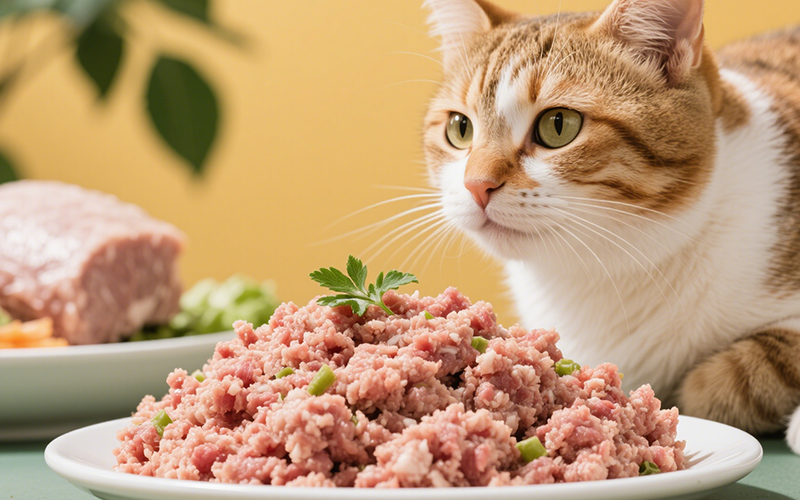
A Purrfect Protein? Can Cats Eat Ground Turkey Safely? (Vet-Reviewed Guide)
- 16 Apr 2025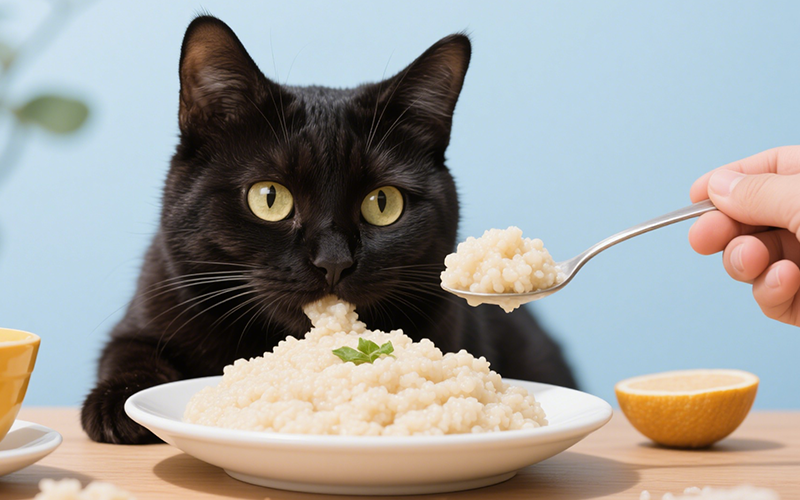
Gritty Situation: Can Cats Eat Grits Safely? Vet Explains the Risks
- 16 Apr 2025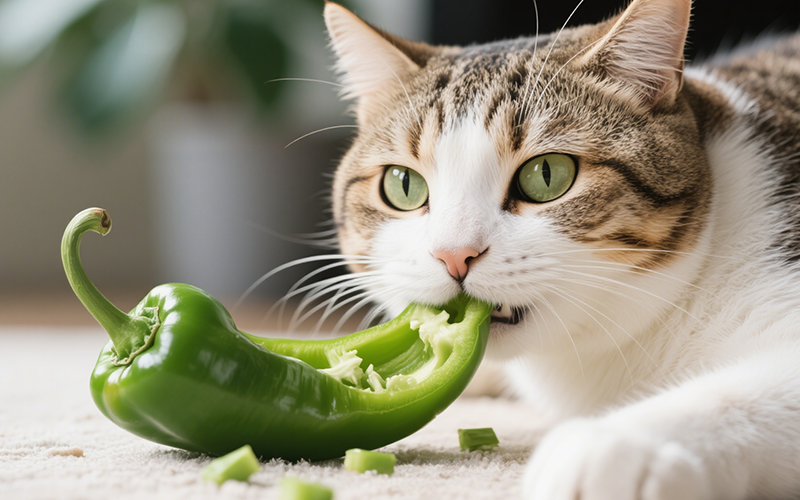
Crunchy Query: Can Cats Eat Green Peppers? A Vet-Reviewed Safety Analysis
- 16 Apr 2025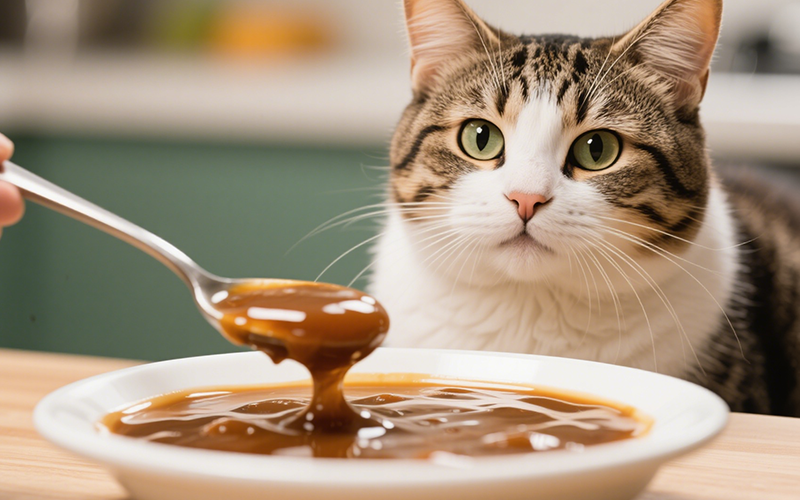
Gravy Danger Zone: Can Cats Eat Gravy Safely? (Vet-Reviewed Warning)
- 16 Apr 2025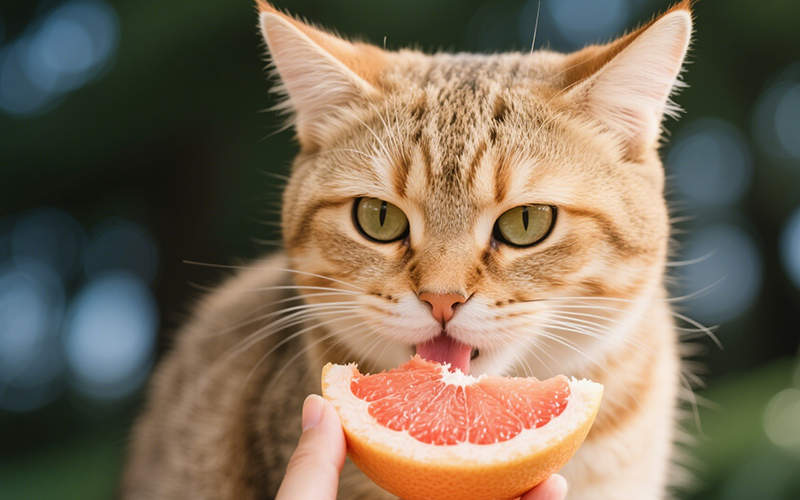
Toxic Temptation: Can Cats Eat Grapefruit? Vet Explains the Dangers
- 16 Apr 2025
Emergency Meal or Major Mistake? Can Cats Eat Dog Food For A Couple Days? (Vet Guide)
- 16 Apr 2025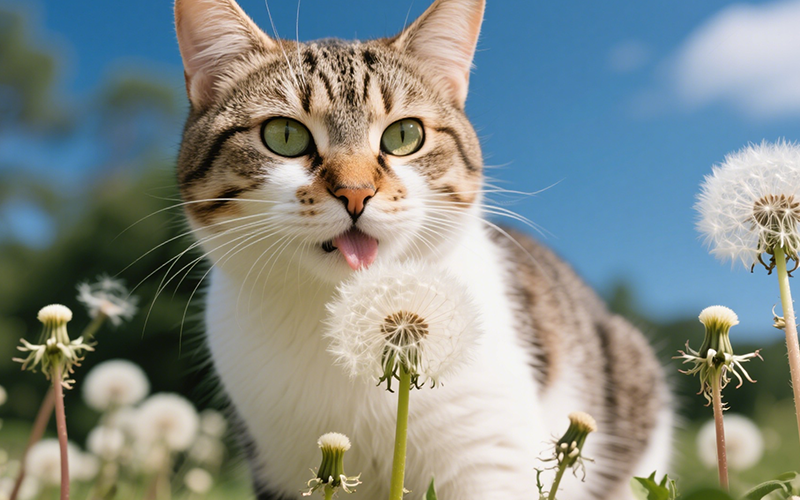
Dandelions & Felines: Can Cats Eat These Common Weeds Safely? Vet Explains
- 16 Apr 2025
Flaky Danger: Can Cats Eat Croissants Safely? Vet Explains the Buttery Risks
- 16 Apr 2025
